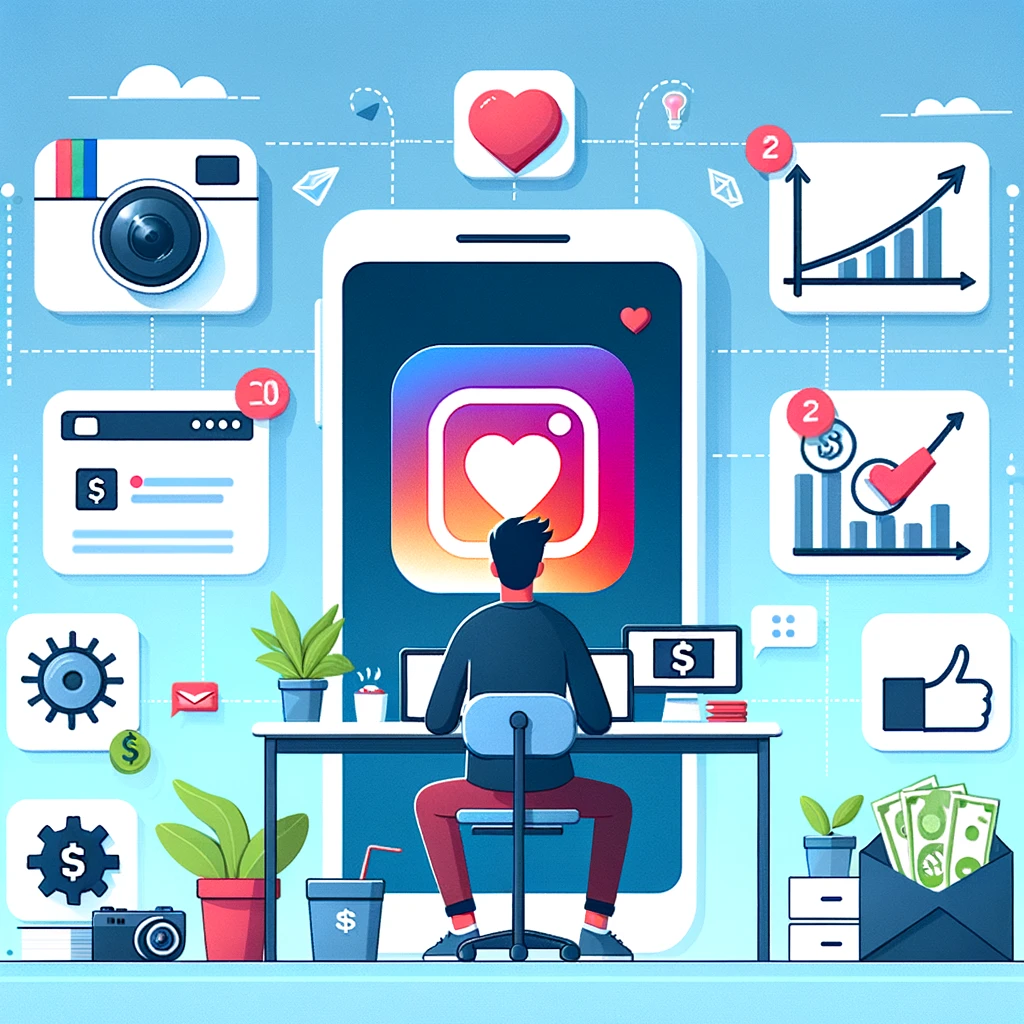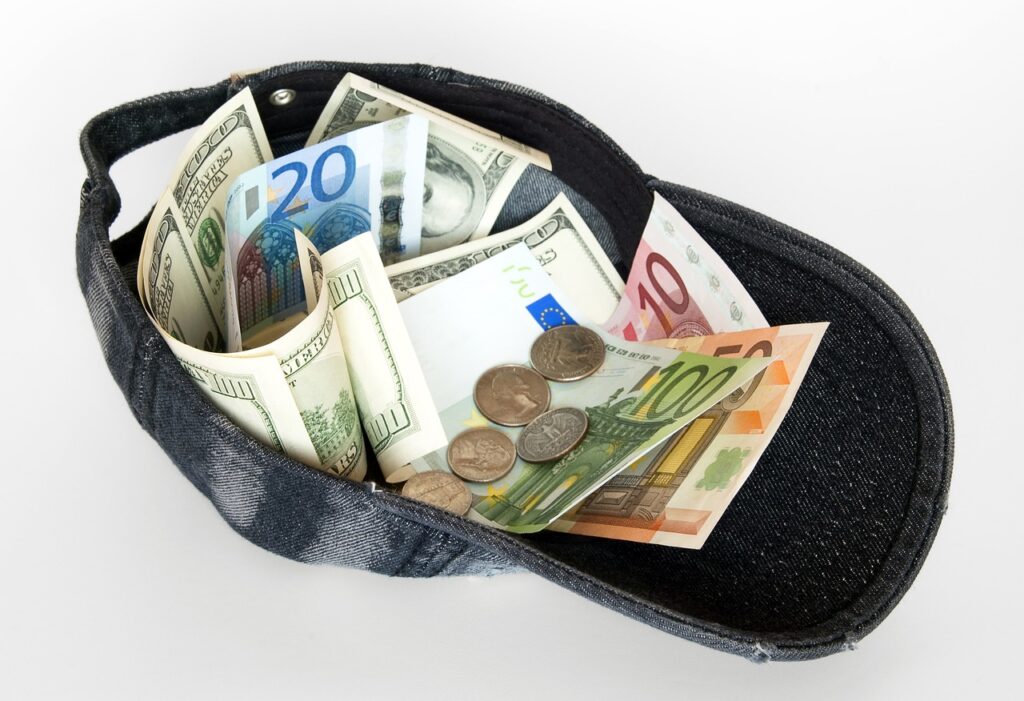How to Effectively Market Your Digital Art:
A key component of using digital art for profit is marketing. Getting your work in front of the right people is equally as important as really doing it. The following are some efficient ways to promote your digital art:
Use social media correctly:

Social media sites with great features for showcasing your work include Instagram, Twitter, and TikTok. Use Twitter to interact with the art community, Instagram to post high-quality photos of your work, and TikTok to share the creative process in order to customize your content for each site. Build an engaged community around your work by interacting with your fans and answering their messages.
Email Promotion:
To create an email list, gather addresses from your website and art exhibitions. Provide your subscribers with frequent mailings that include information about new artwork, behind-the-scenes peeks, and special discounts. Having a direct channel of contact with your audience is quite helpful for developing a personal relationship.
Be in Partnership with Other Artists:
Working together may be an effective marketing strategy. Join forces with influencers or other artists in your field for collaborative initiatives or art exchanges. By doing this, you may reach each other’s audiences and raise your profile simultaneously.
Recognizing the Financial Elements:

Gaining financial success from digital art also necessitates having a solid grasp of payment methods, pricing schemes, and digital asset valuation.
How Much to Charge for Your Art:
Pricing might be difficult, particularly for up-and-coming artists. Think about things like the amount of time invested, the difficulty of the task, and your degree of experience. Examine comparable artists’ prices and try out different price points for different kinds of work (prints vs. original digital files, for example).
The Proper Payment Platform Selection:
Make sure your consumers can easily and reliably pay you using one of your methods. Popular among digital artists are platforms such as PayPal, Stripe, and even cryptocurrency alternatives. When selecting a payment platform, take into account the costs, user-friendliness, and accessibility for your target market.
How to Handle the NFT World:
For digital artists, a new way to market their work as one-of-a-kind, blockchain-based commodities has been made possible via non-fungible tokens (NFTs). Learn about the NFT minting process, how to choose a marketplace, and the associated costs and environmental effects.
Maintaining Your Edge in a Changing Market:
The market for digital art is always changing as new platforms, tools, and trends appear on a regular basis.
Continue to learn and try new things:
It needs constant learning and experimenting to stay relevant. Stay up-to-date with the newest tools and methods for digital art, and don’t be scared to try out new media or styles.

Recognize Trends:
Watch for new developments in the field of digital art. This may include everything from innovative visual trends to technological developments like artificial intelligence-generated art. You may establish yourself as a leader in that field by embracing trends early.
Establish a community:
Ultimately, it is impossible to exaggerate the significance of creating a welcoming community. Talk to your audience, get their input, and encourage other artists. In addition to offering spiritual support, a robust community may provide beneficial networking and collaborative possibilities.
Sophisticated Techniques for Digital Art Profitability:
Go beyond the fundamentals of art marketing and sales and take a look at some cutting-edge tactics to grow your digital art company.
Providing prints and limited editions:
You may greatly enhance the value of your digital work by making it scarce. Provide digital files or limited edition prints, making sure that every item has a digital signature and number. This increases the demand for your art and gives you the opportunity to charge more for it because of its scarcity.
Commissions for Customs:
One of the most profitable aspects of digital art is custom commissions. You may provide customers who are seeking something special that is catered to their requirements or tastes by providing bespoke artwork creation services. This method may be very profitable and gratifying, but it does need strong communication skills and a well-defined modification and approval procedure.
Building Collections of Art:
Create and publish digital artwork in groups according to ideas, themes, or styles. Collections may build interest and anticipation among your audience, particularly if you use sneak peeks to announce future releases. Using this technique, you may also use your artwork to create a narrative, which will give your portfolio more depth and coherence.
Changing Up Your Revenue Sources:
Don’t depend on selling your artwork directly to people. Investigate other revenue sources to diversify your income, such as:
- Licensing of Art: Getting your ideas licensed for use on goods like clothing and home décor may be a consistent source of income.
- Online Workshops and Courses: Offer your knowledge by organizing and running workshops on digital art methods or by developing and marketing online courses.
- Patreon or Membership Sites: Create a community of backers who, in return for a monthly membership fee, get access to unique material, first dibs on new pieces, or other special benefits.
Putting money into content marketing and SEO:
Having an online portfolio is only the start for digital artists. Make an investment in search engine optimization (SEO) to raise your website’s visibility. Make use of keywords associated with your work, style, and subjects you cover. Create a YouTube channel or blog devoted to your artistic process, tutorials, and way of life. This material has the power to grow your website’s audience and position you as an industry expert.
Data and input:
Track the effectiveness of your website and social media accounts using analytics tools. Recognize the sources of your traffic, the artwork that draws the most interest, and the characteristics of your viewership. Utilize this information to improve your marketing tactics and produce audience-resonant art.
Conclusion:
It is possible to succeed as a digital artist in developing countries if you have the correct combination of commercial savvy, effective marketing, and creativity. Through the identification of your own niche, the establishment of a strong online presence, and active audience engagement, you may generate a steady revenue stream from your digital artwork. Accept the way the digital world is changing, keep looking for new ways to expand, and be flexible enough to adjust to the shifting tastes of the art market.
Recall that the path of a digital artist involves not only skill but also perseverance and education. Remain dedicated to your creativity, look for groups of like-minded people, and never give up on finding new platforms for distribution and income from your creations. For those who are eager to explore its depths, the world of digital art offers many opportunities since it is vast and dynamic.



